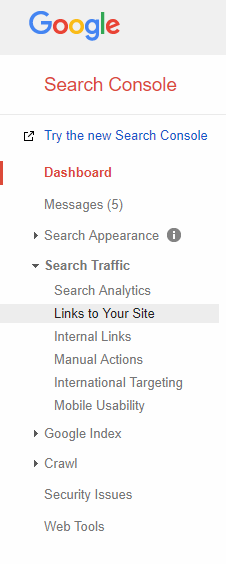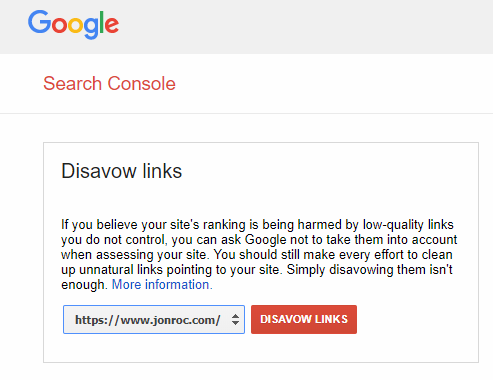
You may even be doing more harm than good! The rules of link building for 2019 have changed; what seemed to have worked just a few short years ago might now land you a few penalties.
It’s not that backlinks have become less important for your rankings. If anything, they’re more important now than ever.
How to Build a Solid Backlink Profile
Establishing a strong profile involves careful implementation of several steps:
- Introspection
- Identify Your Audience
- Clean-Up Your Current Backlinks
- Unveil Your Competitor’s Backlinks
- Prepare Your Content
- Outreach
1. Introspection
The very first step is to take a hard look at your goals. What are you selling or promoting? What value do you bring to the table?
Even if you’ve already established this (good for you!), it could only help to revisit the process. Sometimes you can uncover something you may have missed the first time.
Before you ask yourself who you want to be targeting, you’ll need to determine if what you offer is up to par.
2. Identify Your Audience
After a bit of introspection, you can begin to identify your audience more accurately. The best backlinks are those that bring you qualified traffic (along with that link juice!), so you need to be able to qualify them!
Who Are They?
This is one of the fundamental processes for link building. Everything about SEO revolves around improving user experience. So, it’s no surprise that relevancy has become one of the main goals for SEOs.
Where Are They?
Once you’ve identified your audience, you’ll need to figure out where they are. Think about their habits and tendencies. This information will help you considerably when you are trying to identify the right link prospects.
Find their watering hole, and you’ve struck gold!
Stay updated with the Jonroc newsletter.
You’ll actually want to read this one.
3. Clean Up Your Backlinks
By now, you’ve probably already spent quite a bit of effort pulling together the prerequisite information and characteristics of your audience. But, we’ve only just gotten started…
Unless your website is brand new, there is a significant chance that you’ll have several, if not many, backlinks already. It’s almost a guarantee if you’ve hired an SEO agency in the past. And, the older your website is, the greater the chance that you’ll have a decent amount of cleaning to do.
Discovering Your Current Backlinks
There are several tools that have proven to be very helpful when trying to find all of your backlinks. In fact, Google offers one of the best – for free!
Within Google Search Console (formerly Google Webmaster Tools), you can see all of the backlinks that Google has identified that link to your site. Even better, they even show you the anchor text used for each link (if available).


This is a monstrous wealth of information, right at your fingertips, and will most likely become the bulk of your backlink profile. There is a chance that this list will not include every single link to your site. But, it’ll provide you with a great start!
How To Disavow Toxic Links
Next, you’ll want to check each and every one of those domains that are linking to your site. Ever since Google updated with algorithm with Penguin, webmasters have faced the very real threat of being penalized for having toxic links from external sites.
What are toxic links? These are backlinks pointing to your site that Google has found to be related to link-scheming, spam, and other low-quality sources that are detrimental to providing safe, relevant, and authoritative results in search. The more toxic the link, the greater risk of being penalized and seeing your ranks plummet!
There are several good tools you can use to find out how toxic a link is, such as SEMrush and SpyGlass.
Once you’ve figured out the bad links, do your best to reach out and contact the owner of the site with the toxic link and politely ask them to remove the link, or at least set the noFollow attribute.

But, chances are this will be much more difficult than it’s worth. You can use Google’s Disavow Tool to submit a file to Google with a list of toxic backlinks to your site in order to ask for them to not consider those links when calculating your PageRank.
But, this should really be a last result if your attempts to contact the webmasters are ignored or otherwise fail.
An important note should you decide to disavow links – do so with extreme care! This has the potential to harm your rankings, and many people have unintentionally caused more harm than good with it.
Even if you do everything correctly, you will almost always see a drop in your rankings in the days following disavowal, which is due to the fact that your site no longer receives the same amount of links (good or bad).
But, once Googlebot comes crawling around your site again and recalculates your backlink profile, any penalties that those toxic links get lifted and no longer weigh your website down.
4. Unveil Your Competitor’s Backlinks
This will be a more difficult step to accomplish, but it could potentially give you some of the best link-building candidates.
Unfortunately, Google Search Console won’t help you with acquiring the backlinks of your competitors, but there are other tools you could use to help.
Ahrefs, Moz, as well as SEMrush and our personal favorite SEO Profiler are all helpful for this, and each offer their own free trials.
Luckily, there are other ways to uncover these gems. For instance, you can use search modifiers when looking up topics or keywords on Google:

(Just remember to swap out “competitor.com” for your competitors URL, and “keyword” for your actual keyword you want to look up).
This will bring up results of all the pages on your competitor’s website related to your keyword. You can then run a similar search:

(Again, swap out “competitor.com/page” with one of the pages you found in the previous search, and then add a minus-modifier (“-“) attached to the beginning of your competitor’s main domain URL)
This will bring up all the links that Google can find for that page. Of course, doing it manually this way takes much longer, but it still works!
5. Prepare Your Content
Next, you’ll want to make sure that your content is up-to-par. To convince the best prospects to accept your proposal to link to your website, you have to give them something in return. This usually translates to providing the best possible content on the topic they’re interested in.
It’s incredibly important to keep their audience in mind too; don’t just consider your own! Link building should be a win-win relationship between the content provider (you) and the publisher.
Here are a few ways to make sure you have the best quality content out there!
The Skyscraper Technique
This term was coined by Brian Dean at backlinko.com, and it is brilliant! The idea is broken down into three main steps:
- Find Proven Linkable Assets
- Make Something Even Better
- Reach Out to the Right People
In this section, we will be focusing on steps #1&2, since we will be going over the essentials of step 3 later (below).
To put it simply, the first step is to do a search about a topic or keyword you would like to promote in order to find out what else is out there. This is the easier part, but take your time with this. You’ll be looking for the best article you can find that talks about the same idea your content talks about.
The next step: make it better. This is easier said than done, however. But as Brian explains in his article, why do all of the work when the work has already been done?
To paraphrase: Think of it as if you were searching for the tallest skyscraper in the world, and when you find it, slap another 20 floors on top of it!
But it’s not just adding words for the sake of adding words. You’ll want to make it better in every way you possibly can – design, responsiveness, word choice, etc. Look for points that may have become outdated and no longer relevant, and fix it!
Now you have a fantastic article that publishers will be dying to get their hands on, because it will be the best content out there.
6. Outreach
The final step, for some reason, seems to be the toughest. It’s not a technical barrier sort of thing. There’s just something that makes people feel uncomfortable about reaching out to other webmasters unsolicited.
This is why you want to make sure you qualify your link prospects and prepare your content to be the best. Even still, you’re likely to see a low success rate. But consider this, SEO trends are pointing to the idea that a handful of high-quality backlinks are significantly better than tons of poor-quality or toxic backlinks.
It’s Quality over Quantity.
So, even after all of this work, if you only manage to reach out to 20 prospects, and out of those you only receive one positive reply resulting in a high-quality backlink, ALL of that effort was worthwhile!
Conclusion
Don’t be ashamed if all of this is completely new! Even if you have SEO experience, revisiting your link building strategy could offer some amazing benefits to you. Especially if you had hired an SEO agency a few years ago, or if you personally went out and “bought” links via one of those amazing deals on Fiverr… Then you’ll definitely want to check your backlinks for toxic links.
Unfortunately, it wasn’t that long ago where buying backlinks was “the” way to go, because it worked back then. But this resulted in tons of spammy content rocketing up to the first page of Google.
Naturally, Google had decided to shut this abuse down in order to maintain the internet’s high-quality content. (This is where Penguin comes in).
Point is, many of the old-school link building tactics are no longer helpful, and some are downright harmful! That leaves us with a bit more effort to invest, but the rewards are more than worthwhile!
